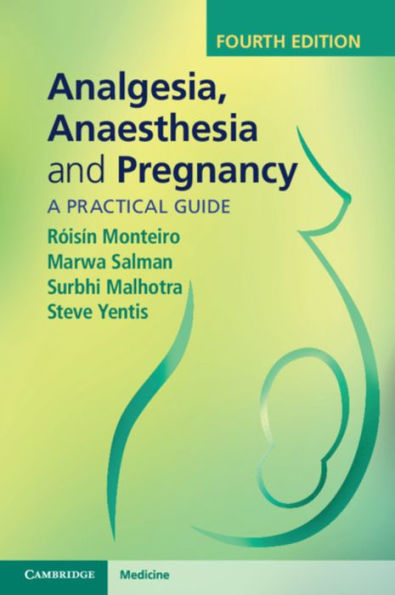Reviewer: Rebecca C Myers, MD (University of Kentucky College of Medicine)
Description: The fourth edition of this practical guide seeks to update best anesthesia practice and guidelines in obstetric anesthesia. Since the third edition, published in 2013, the authors have added two coauthors, collaborated with an additional obstetrician, and updated information and recommendations throughout. The book covers an extensive list of topics in an efficient manner, devoting each chapter to a single topic, primarily via text rather than diagrams or images. Chapters end with a useful keywords section and a list of further reading. References are deliberately omitted so as not to "detract from the readability and ease of use."
Purpose: The purpose is to provide a brief but comprehensive reference for training anesthesiologists, as well as an adjunctive tool for those teaching obstetric anesthesia. Given the ever-evolving nature of medicine, a fourth edition was necessary to ensure learners have access to the most up-to-date practices and recommendations. This is especially relevant as women with previously untreatable congenital cardiopulmonary conditions are now surviving to childbearing age. The primary goal of the book is to provide an easy-to-use, easy-to-read, concise review of the most commonly encountered conditions and problems in obstetric anesthesia.
Audience: The primary audience is students and residents training in anesthesiology with a secondary audience of teaching or practicing anesthesiologists. The relatively rudimentary content is consistent with the target audience. It is written by and for physicians practicing in the U.K., but there is significant overlap with practices in the U.S., making it useful for these readers as well. The authors are consultant anesthesiologists with a background in obstetrics, and collectively they have published numerous book chapters, journal articles, and conference presentations.
Features: The book is divided into four sections: issues related to preconception/conception, pregnancy, puerperium, and organizational issues. Section I has a very brief overview of issues related to conception, current methods to increase ovulation and fertilization, a short summary of the stages in fetal development, and anesthetic management of a patient in the first few weeks of pregnancy. The information is a bit scant, so those who want information on any of these topics should seek out a different source. That said, the goal of this book is to provide a brief overview of key topics and, in that context, these chapters have value. The second section is subdivided into chapters related to pregnancy, nonoperative and operative delivery, complications related to anesthesia, problems encountered in obstetrics such as preeclampsia, and management of nonobstetric conditions in pregnant patients such as asthma. The book is complete in its inclusion of a diverse range of topics. The chapter on anatomy of the spine and peripheral nerves gives a detailed description of anatomy, complete with images of the bony anatomy and the spinal cord itself. Lacking from this chapter is a description of innervation of the reproductive organs, which would be useful later in chapters on analgesia for labor and delivery. This information is not included in the chapters on stages of labor, epidural analgesia, or anesthesia for caesarian section either; it would be useful to include this information with a description of how to provide analgesia for each stage of labor as these are commonly tested topics. What I like most about section two is the wide range of topics. For example, it contains a nonmedical chapter on nonpharmacological analgesia with information on TENS, acupuncture, aromatherapy, and doulas. On the other end of the spectrum, it contains a chapter on management of a difficult airway complete with essential algorithms. While the chapters are not comprehensive, they do concisely present the topics, as well as the obstetric and anesthetic management of various conditions. The third section discusses puerperium related to both the neonate and the mother. It includes a helpful algorithm for neonatal resuscitation with more details on each step. It should be noted that the recommendations are slightly different than those of the U.S., as they do not include positive pressure ventilation for heart rate below 100. The fourth section on organizational issues covers topics of consent, minimum standards and guidelines, risk management, and more. It does make note of a few differences between care in the U.S. and the U.K. There is also a chapter on the history of obstetric anesthesia that readers may find interesting.
Assessment: This book briefly covers the most commonly encountered conditions and problems in obstetric anesthesia. The brevity of each chapter and inclusion of only the most important details of each topic limit its use as a book for gaining a thorough understanding of obstetric anesthesia, whether by trainees or practicing physicians preparing for board exams. However, its intended use is as a reference for learners needing concise coverage of a topic. The information is sufficient for its intended purpose and training physicians will appreciate the book during their obstetric anesthesia rotation. It is less detailed than most obstetric anesthesia books; its small size and ease of reading will render it useful for when on call. Given the updated reading material, the updated guidelines and recommendations, and the updated expansion of topics, this fourth edition is clearly justified and will be a welcome addition as a quick reference for those who practice obstetric anesthesia.



